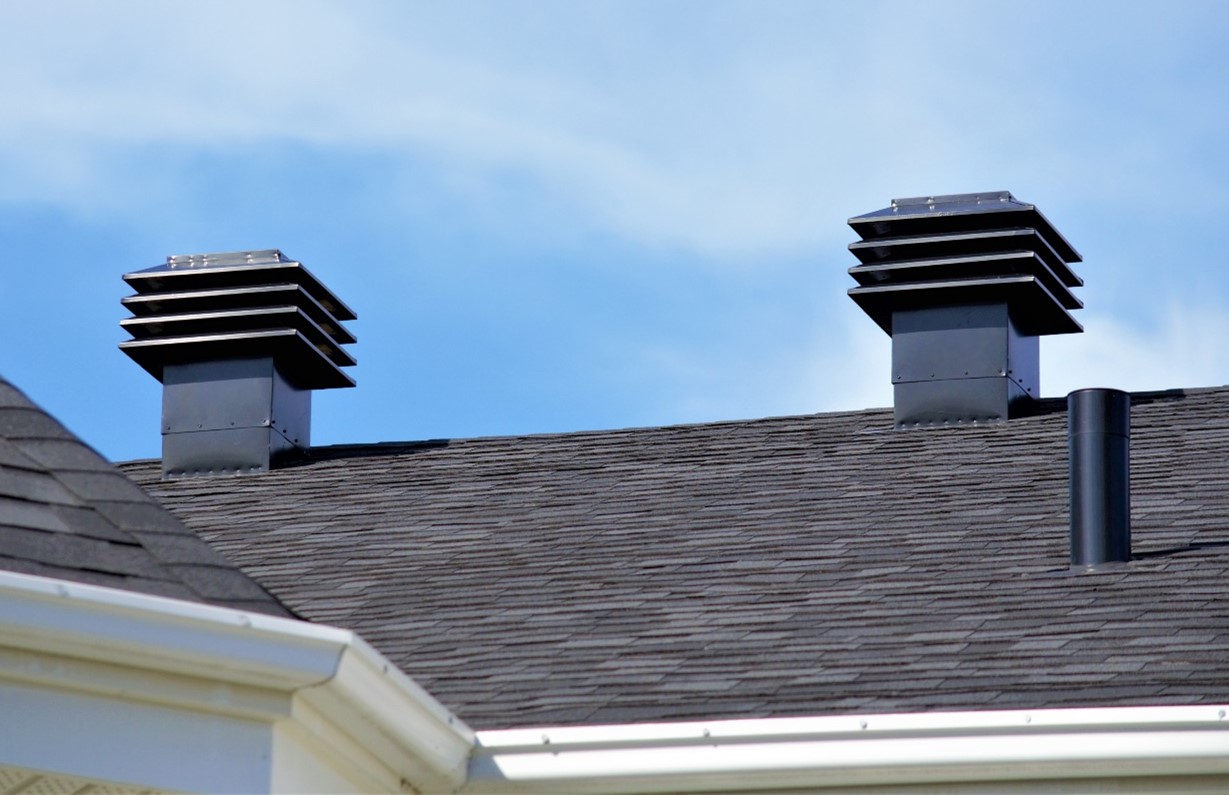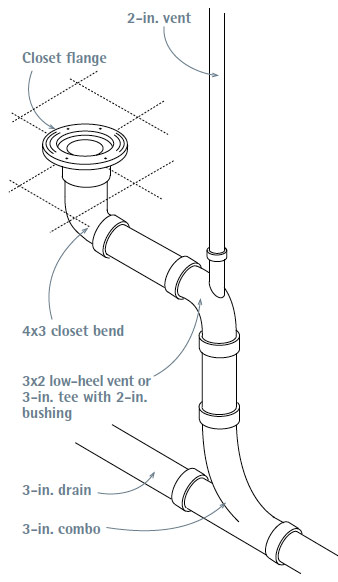Understanding The Necessity of Proper Ventilation in Plumbing Systems
Understanding The Necessity of Proper Ventilation in Plumbing Systems
Blog Article
We have discovered this post pertaining to What Is A Plumbing Vent & How Do They Work? directly below on the web and figured it made sense to share it with you on this page.

Correct air flow in pipes systems is typically ignored, yet it is important for keeping the functionality and security of your home's pipes. Ventilation helps regulate atmospheric pressure, avoid the buildup of dangerous gases, and make certain the reliable removal of waste. In this guide, we will certainly explore the importance of appropriate plumbing air flow, just how it works, and the advantages it brings to your pipes system.
Exactly How Ventilation Works in Plumbing Equipments
Atmospheric Pressure Policy
Correct air flow keeps well balanced atmospheric pressure within the plumbing system. When water moves through pipes, it displaces air. Without adequate air flow, this displacement can create unfavorable stress, leading to slow drains pipes or siphoning of water from traps, which can trigger unpleasant smells to permeate right into the home.
Stopping Sewage System Gas Buildup
Among one of the most essential features of plumbing vents is to avoid drain gases, such as methane and hydrogen sulfide, from collecting within the home. These gases can posture major health and wellness threats and are very combustible. Vent pipelines permit these gases to escape safely outdoors.
Helping in Waste Elimination
Ventilation helps in the efficient elimination of wastewater by avoiding airlocks in the drain system. When air can move easily through the vents, it enables water and waste to stream efficiently through the pipes, reducing the risk of clogs and backups.
Benefits of Correct Ventilation
Enhanced System Performance
Properly aerated plumbing systems operate more efficiently, with fewer blockages, faster draining, and much less stress on the pipelines. This efficiency expands the life expectancy of the pipes system.
Improved Air Quality
By preventing sewer gases from entering your home, proper air flow contributes to far better indoor air high quality, making your living environment healthier and a lot more comfortable.
Preventing Water Damages
Adequate air flow aids protect against water from being siphoned out of traps, which can lead to sewer gases entering the home and creating water damage over time.
Actions to Make Sure Proper Ventilation
Consulting Pipes Codes
Constantly seek advice from neighborhood pipes codes when making or changing your plumbing system. These codes supply the required standards for correct venting and ensure your system fulfills safety criteria.
Normal Examination and Upkeep
Normal examinations can assist determine prospective ventilation problems prior to they become major issues. Maintenance jobs, such as cleaning vent pipes and looking for blockages, are crucial for maintaining the system in good working order.
Professional Installation
For new setups or significant modifications, it's important to work with a specialist plumbing. They have the expertise to guarantee the air flow system is correctly created and mounted according to code.
Comprehending Ventilation in Pipes
Ventilation in pipes describes the network of pipes that enable air to move with the drainage system. These vents offer numerous objectives, including managing air pressure within the pipes, preventing drain gases from getting in the home, and assisting in the smooth flow of wastewater.
Types of Plumbing Vents
Key Heap Vent
The primary stack air vent, additionally known as the vent stack, is the main air vent in a pipes system. It prolongs from the main drainpipe line up with the roofing system, permitting gases to leave and fresh air to enter the system.
Branch Vent
Branch vents attach to the main pile vent and serve private components, such as sinks, commodes, and showers. These vents make certain that each fixture has sufficient ventilation to operate effectively.
Air Admittance Shutoff (AAV).
An Air Admission Valve (AAV) is a one-way shutoff that enables air to go into the plumbing system without the demand for a traditional air vent pipe extending via the roof. AAVs are typically used in remodellings or locations where installing a basic air vent is not practical.
Signs of Poor Ventilation in Plumbing.
Slow Draining Fixtures.
If your sinks, bathtubs, or bathrooms are draining pipes gradually, it could be an indication of bad ventilation. Poor air circulation can create a vacuum cleaner result, making it difficult for water to drain correctly.
Gurgling Seems.
Gurgling noises originating from drains pipes are usually a result of air being drawn via water traps as a result of negative stress in the pipes. This is a clear indicator of not enough ventilation.
Unpleasant Smells.
Sewer odors inside your home are a red flag that your plumbing system is not correctly aerated. This could suggest that sewer gases are not being effectively vented outside, resulting in potentially harmful conditions.
Typical Ventilation Blunders.
Insufficient Vent Sizing.
Utilizing undersized air vent pipelines can cause bad air flow and stress inequalities in the system. It's important to utilize vents that fulfill the certain needs of your pipes system.
Improper Vent Positioning.
Placing vents as well much from the components they offer can minimize their effectiveness. Proper positioning makes sure that air can move openly and effectively with the system.
Disregarding Code Demands.
Building codes offer particular guidelines for pipes air flow. Overlooking these codes can result in a system that falls short to operate appropriately and might result in pricey repair services or health hazards.
Final thought.
Correct air flow is a crucial element of any plumbing system, ensuring that it functions successfully and safely. By comprehending the importance of ventilation, acknowledging the indications of bad ventilation, and taking actions to maintain your system, you can protect against pricey concerns and protect your home's air high quality.
4 Things You Should Know About Your Plumbing Vents
What Plumbing Vents Are
Also called a vent stack, a plumbing vent is a vertical pipe attached to your drain line that runs through your roof. The plumbing vent pipe, or plumbing air vent, removes gas and odors from your plumbing system and allows fresh air to enter the pipes, helping the water to flow out of the drain pipes.
What Plumbing Vents Do
Plumbing vents have two basic functions. One of which is to allow unpleasant smelling wastewater and sewer gasses to escape your plumbing system instead of entering your home. Plumbing vent pipes are typically located on roofs, away from windows, to ensure the fumes exit the home completely.
The other function of the plumbing vent is to move fresh air into your plumbing system. This helps move water through every plumbing fixture in your house, like toilets and sink drains. Think of the way in which you need to let a little air into the bottle as you pour soda in order to make the drink flow smoothly.
Different Types of Plumbing Vents
True vent: This is the most common vent option. In simplest terms, a true vent is a vertical pipe attached to your drain line that exits through the roof. They often function as the main vent that other fixtures can connect to. Re-vent pipe or auxiliary vent: Attached to the drain line near specific plumbing fixtures, re-vent pipes run up and over to connect to the main vent. Common vent: Two plumbing fixtures installed on opposite sides of a wall are typically tied into the vent stack using something known as a sanitary cross. Wet vent: This venting option operates as a drain pipe and a vent at the same time. Wet vent drainage systems drain water from one fixture while venting the air from another. Although they’ve been used for over 100 years, wet vent systems have only recently been added to the plumbing code in many areas. If you’re planning on installing one in a bathroom remodel, make sure you check your local code prior to construction. Loop vent: For free-standing fixtures like kitchen island sinks, loop vents are ideal. These vent pipes run under the floor, rise from the P-trap, and create a loop inside the cabinet sink. Air admittance valve: An AAV is a one-way mechanical valve typically installed at the site of the plumbing fixture. AAVs allow venting to occur without having to tie into a larger venting system. They’re ideal for venting fixtures where you aren’t able to easily connect to an existing vent system. Common Plumbing Vent Issues
Although vent pipes typically don’t have water flowing through them, they’re still subject to many typical plumbing issues. For example, clogs are one of the most common problems associated with sewer vent pipes. If your vent pipe gets clogged, all of your plumbing fixtures tied into the vent stack will be affected.
A sink with a slow drain that bubbles and gurgles or a strong sewage smell around your toilet are both indicators that your toilet vent pipe is clogged. Because most vent pipes exit through the roof, old leaves, twigs or even a bird’s nest could be clogging the pipe.
Clogs in your vent pipe system cause a buildup of negative pressure, meaning that water won’t be able to flow out of your home very well. It’s similar to putting your finger over the opening of a straw to trap water inside. When you remove your finger, the water is able to flow out of the straw.
If you suspect you have any blockage in your vent, make sure you have a professional come examine the situation. Left unchecked, a blocked air vent can lead to other costly repairs, like leaks and sediment buildup.
Under Pressure
Pipe vents are essential aspects of a home’s plumbing system. Owning a home means learning about all sorts of things you never put much thought into before. But by understanding as much as you can about the important systems of your home, you can keep those budgets intact and those anxiety levels low.
https://www.homeserve.com/en-us/blog/home-improvement/plumbing-vents/

Do you appreciate reading up on ? Put a comment down below. We would be happy to listen to your reactions about this article. We are looking forward that you come back again in the near future. I beg you take a moment to distribute this blog if you enjoyed reading it. Thanks so much for your time invested reading it.
Click Here Report this page